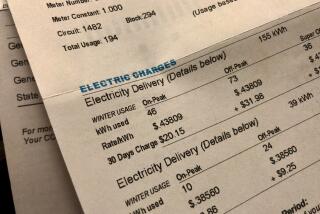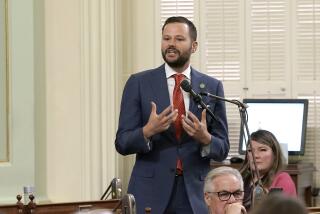Editorial: Needing emergency treatment is bad enough. End surprise ER bills
When you go to a grocery store, you don’t put a loaf of bread or a cut of meat into your basket without looking at the price tag. But when Americans go to a doctor or a hospital, they typically have no idea what their healthcare provider will charge for the services they’re going to receive. Instead, they stick with the providers in their network, trust their doctors’ treatment recommendations and hope that their insurer will cover most of the cost.
That’s fine until you’re in a car wreck and an ambulance takes you to an out-of-network hospital for emergency care. Or until you go to an in-network emergency room, only to discover later that the specialists assigned to your case were out-of-network.
Then you get hit with a surprise bill above and beyond your insurance co-pay that may be more crippling than the injury that sent you to the hospital in the first place. More than 1 in 10 American adults has received an unexpected bill from an out-of-network provider, according to a survey last year by NORC at the University of Chicago. Horror stories about surprise bills have become so common that a recent Kaiser Family Foundation poll found that more than three-fourths of those surveyed want Congress to protect them from this practice.
Congress needs to step in and protect people from being taken advantage of while they are flat on their backs.
Washington is listening. At least four bipartisan bills to curtail surprise medical bills have been introduced in Congress. And President Trump jumped into the debate earlier this month, calling on Congress to move on the issue.
But while there is a consensus about the nature of the problem, there is no agreement yet on how to solve it. Ultimately, lawmakers will have to make an uncomfortable choice about winners and losers, either forcing insurers to eat more of the costs — which they will then pass on to consumers in the form of higher premiums — or making healthcare providers take a haircut on their fees. Or both.
The out-of-network billing problem exists in part because insurers have sought to rein in costs by shrinking their provider networks and steering patients to less expensive doctors and hospitals. But some specialists and provider groups have deliberately played the out-of-network game.
This is especially true in emergency rooms, where the patients’ inability to choose their doctors provides a strong incentive for physicians not to cut deals with insurers. For example, a 2017 study on surprise bills by Yale University researchers reported that one group of emergency room physicians that exited networks to bill as out-of-network providers charged twice as much for care as their ERs used to charge.
The various proposals in Congress would all prevent patients from being billed more for out-of-network emergency care than they would have to pay for in-network care. They differ, though, over the issue of who should have to cover the costs that patients would no longer have to pay. A proposal by Sens. Lamar Alexander (R-Tenn.) and Patty Murray (D-Wash.) lays out three options: One is to let out-of-network providers and insurers settle disputes over fees through binding arbitration. Another is to have Congress set a benchmark price for each service — for example, the average amount that an insurer has agreed to pay in-network providers. A third is to require all providers and diagnostic services at an in-network hospital to be in-network as well.
(The California Legislature is considering a good proposal of its own to end surprise ER bills: Assembly Bill 1611, which would require insurance policies to impose the same out-of-pocket limits for emergency treatment regardless of whether it was provided in or out of network. The measure would set benchmarks to limit how much hospitals could charge for emergency and post-stabilization treatment, similar to the approach the state has already taken to protect residents against surprise bills for non-emergency care.)
Enter the Fray: First takes on the news of the minute »
Setting a benchmark based on average in-network fees makes more sense than leaving disputes between insurers and out-of-network providers to bare-knuckled arbitration. Such a benchmark is the closest approximation available to a fair market price, and it would be an important safeguard against gouging.
Ultimately, policymakers need to do more to enable healthcare consumers to learn about costs ahead of time and to bring competition and market forces to bear on this industry, especially with Americans on the hook for ever-rising deductibles. The Trump administration has pushed healthcare providers to publish their prices so that consumers (and insurers) can more easily shop around. Even more helpful are efforts to develop teams of providers that compete by offering complete treatments for set prices, as companies such as Remedy Partners are doing.
Yet when it comes to emergency care, patients can’t shop around for providers, giving doctors and hospitals a captive audience and a free pass to gouge. Congress needs to step in and protect people from being taken advantage of while they are flat on their backs. State lawmakers should do the same.
Follow the Opinion section on Twitter @latimesopinionand Facebook
More to Read
A cure for the common opinion
Get thought-provoking perspectives with our weekly newsletter.
You may occasionally receive promotional content from the Los Angeles Times.










